The Green Dragon Tavern in Boston is not merely a relic of the past; it is a living testament to the birth of American independence.
Established in 1654, this iconic tavern transcends its origins as a social hub, emerging as a pivotal player in the unfolding drama of the American Revolution.
Frequented by revolutionary luminaries like Paul Revere and John Hancock, the Green Dragon became a clandestine meeting ground where plans for rebellion were hatched.
The blueprint for events such as the Boston Tea Party emerged from discreet discussions.
Though no longer standing in its original form, this historical landmark preserves its legacy through a reconstruction that allows modern visitors to step into the heart of Boston’s revolutionary spirit, connecting with the essence of a nation’s fight for freedom.
What Is Green Dragon Tavern in Boston?
The Green Dragon Tavern in Boston is a historic establishment that has played a significant role in shaping American history, particularly during the War of Independence.
Established in 1654, the tavern has a long and rich history, serving as a prominent meeting place for key figures in the revolutionary movement.
One of the notable aspects of the Green Dragon Tavern is its association with important figures of the American Revolution. Paul Revere, a well-known patriot and silversmith, was a frequent visitor to the tavern.
Additionally, John Hancock, a prominent political leader and one of the Founding Fathers, had a close connection as his brother lived next door to the Green Dragon.
The tavern became a hub for revolutionary activities and secret meetings. It provided a discreet and convivial setting for discussions among patriots who were discontent with British rule.
The clandestine nature of these gatherings allowed revolutionary leaders to strategize and plan without drawing the attention of British authorities.
Origin of The Green Dragon Boston History
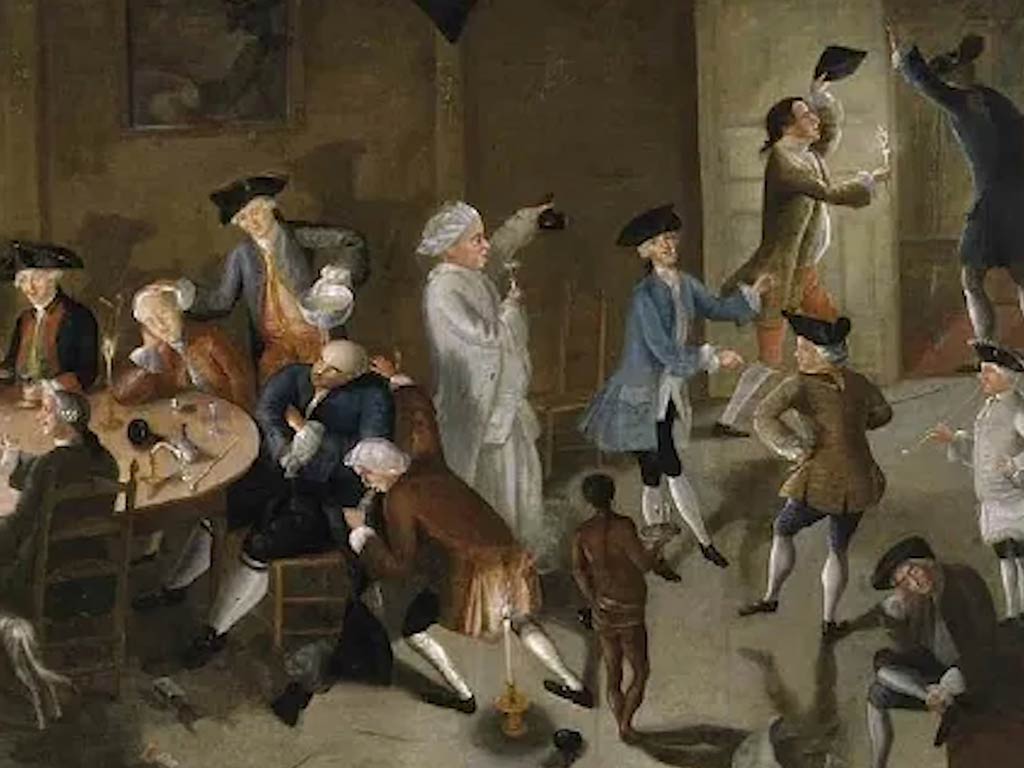
The Green Dragon Tavern in Boston, Massachusetts, holds a significant place in American history as a pivotal meeting place during the colonial period.
Its origins can be traced back to the early 18th century, and its establishment played a crucial role in fostering revolutionary sentiments and political discussions that ultimately contributed to the birth of the United States.
Historical Context and Establishment
The Green Dragon Tavern was established in 1654 as a regular pub in Boston’s North End. However, it gained prominence in the mid-18th century when it became a popular meeting spot for local political and revolutionary figures.
The tavern was situated in a bustling area and quickly became a hub for discussions on colonial grievances against British rule.
Revolutionary Gatherings
The Green Dragon Tavern earned its reputation as a hotbed of revolutionary ideas due to its role in hosting secret meetings of various revolutionary groups.
Notable figures like Paul Revere, John Adams, and Samuel Adams were known to frequent the tavern, using its discreet and convivial atmosphere to discuss strategies and ideas that would later shape the course of American history.
The Birth of Revolutionary Plans
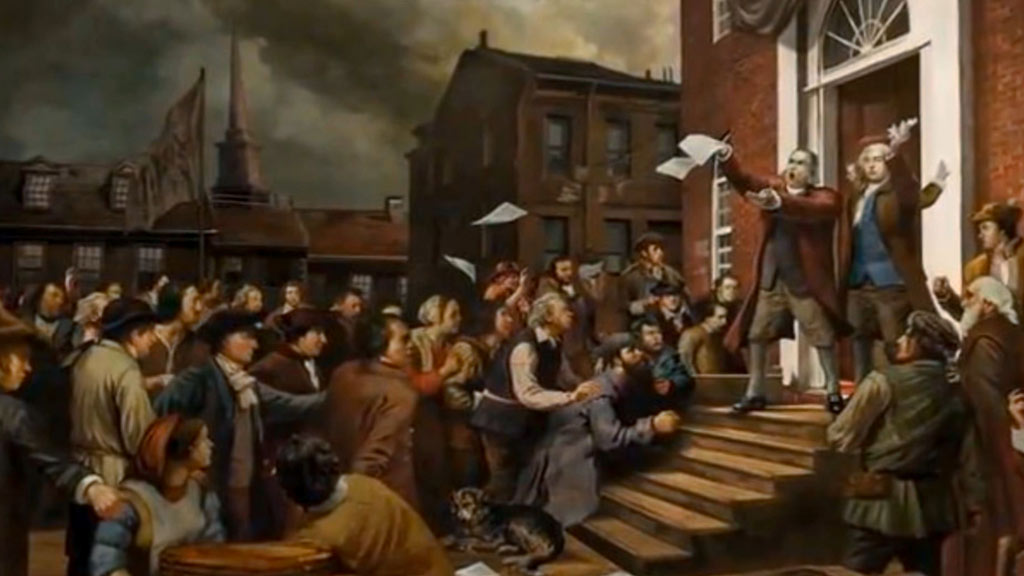
One of the most famous events associated with the Green Dragon Tavern was planning the Boston Tea Party in 1773.
It is said that the Sons of Liberty, a group of patriots seeking independence from British rule, met at the tavern to plan and organize the protest against the Tea Act.
The clandestine nature of these meetings allowed revolutionary leaders to coordinate their efforts without alerting British authorities.
Legacy and Significance
The Green Dragon Tavern’s legacy extends beyond its role as a meeting place. It symbolizes the spirit of resistance and unity that characterized the American Revolution.
The ideas and plans formulated within its walls contributed to developing a collective consciousness that would eventually lead to the Declaration of Independence and the establishment of the United States.
The Green Dragon Tavern is a historical landmark that witnessed the birth of revolutionary fervour in colonial America.
Its significance lies not only in its physical presence but also in the ideas and plans that were conceived within its walls, paving the way for the emergence of a new nation committed to the principles of liberty and self-determination.
The Green Dragon and the War of Independence
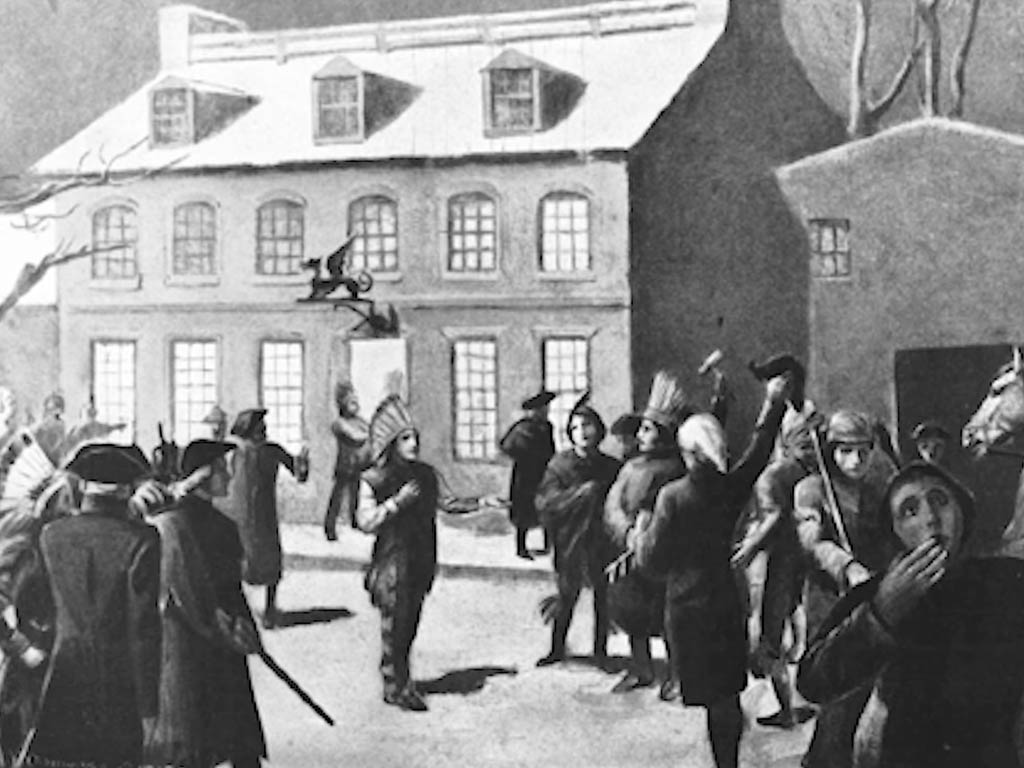
The Green Dragon Tavern played a pivotal role during the War of Independence, serving as a crucial meeting place for revolutionary leaders and a hub for exchanging ideas that fueled the flames of rebellion against British rule.
Established in 1654, this historic tavern in Boston became an epicentre for the planning and coordinating key events that shaped the course of the American Revolution.
Secret Meetings and Revolutionary Planning
The Green Dragon Tavern gained notoriety for hosting secret meetings of revolutionary groups, most notably the Sons of Liberty.
This clandestine organization, comprised of influential patriots like Paul Revere and John Hancock, utilized the tavern’s discreet atmosphere to discuss strategies and plan actions against British oppression.
The tavern’s central location in Boston made it an ideal meeting spot, and its reputation for hosting such gatherings contributed to its significance in the revolutionary movement.
Birthplace of the Boston Tea Party
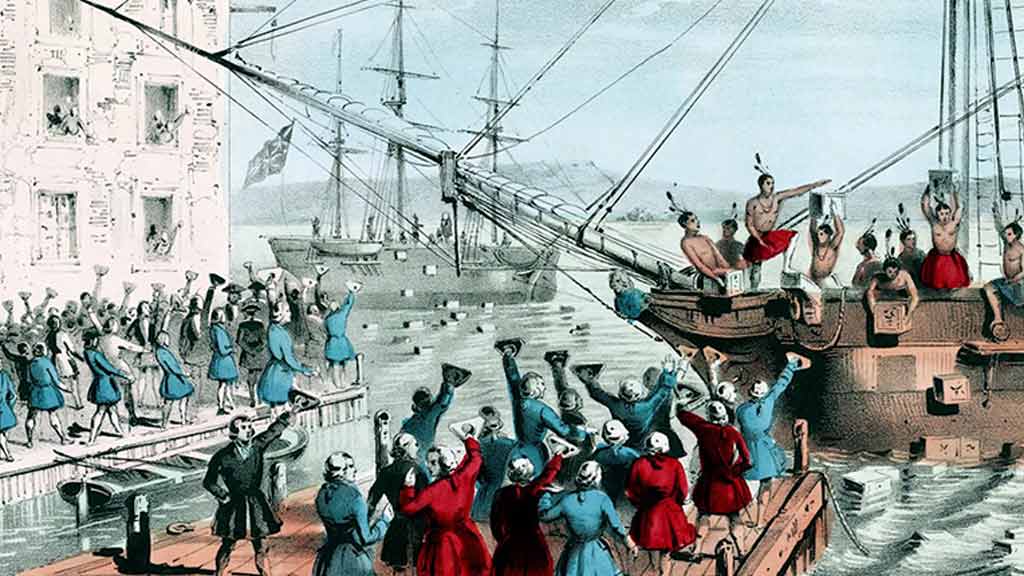
Among the landmark events associated with the Green Dragon Tavern was its role in planning the Boston Tea Party in 1773. Patriots, including members of the Sons of Liberty, met at the tavern to devise and organize the protest against the Tea Act.
The discussions held within the Green Dragon’s walls were instrumental in shaping the protest that would later become a symbolic act of resistance and a catalyst for the intensification of hostilities leading to the Revolutionary War.
Networking and Communication Center
The Green Dragon Tavern was a networking and communication centre for revolutionary leaders.
It provided a space where like-minded individuals could share information, discuss grievances, and coordinate efforts against British policies.
The exchange of ideas within the tavern’s walls helped create a sense of unity and purpose among the patriots, laying the groundwork for a more organized resistance.
Symbol of Revolutionary Spirit
The Green Dragon Tavern symbolises the revolutionary spirit that permeated Boston during the War of Independence.
It represents a place where the seeds of freedom were sown and where the early stages of resistance against British rule were nurtured.
The tavern’s legacy extends beyond its physical structure, embodying the ideals of liberty and independence that fueled the revolutionary fervour of the time.
The Green Dragon Tavern’s association with the War of Independence goes beyond being a mere historical site.
It served as a crucial meeting point, a planning headquarters, and a symbol of the revolutionary spirit that ultimately led to the birth of the United States of America.
The tavern’s legacy is a testament to the bravery and determination of those who gathered within its walls to forge a path toward independence.
The Cultural Heritage of Green Dragon Boston History
The Green Dragon Tavern in Boston boasts a rich cultural heritage deeply intertwined with the city’s history.
As a historic establishment dating back to 1654, the tavern has played a significant role in shaping the cultural fabric of Boston, particularly during key periods such as the American Revolution.
Colonial-era Social Hub
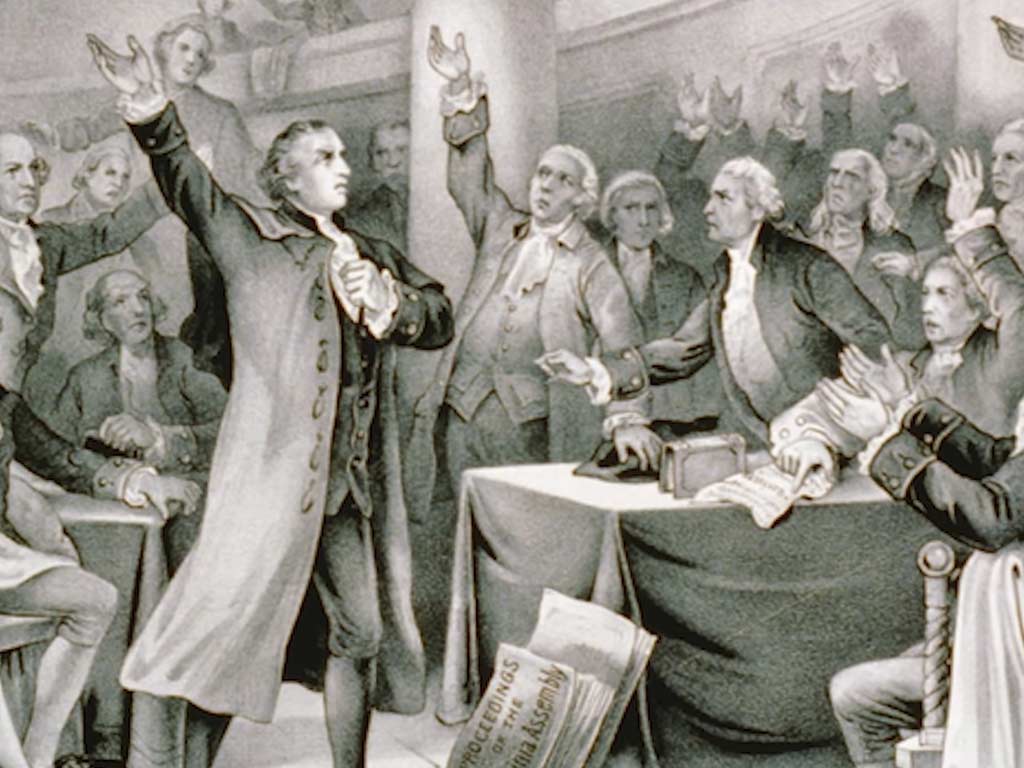
In its early years, the Green Dragon Tavern was a social hub for the local community. As one of the oldest taverns in Boston, it became a gathering place for residents to socialize, exchange news, and engage in discussions.
The tavern’s fostering of community connections contributed to its cultural significance in the colonial era.
Revolutionary Meeting Ground
The Green Dragon Tavern evolved into a focal point for revolutionary activities during the American Revolution.
It became a meeting ground for influential figures like Paul Revere, John Hancock, and other patriots who gathered to discuss and plan actions against British rule.
This historical context has embedded the tavern in the cultural narrative of Boston as a site where the seeds of independence were sown.
Birthplace of Revolutionary Ideas
The Green Dragon Tavern is regarded as the birthplace of numerous revolutionary ideas that fueled the quest for American independence.
The exchange of political discourse and intellectual dialogue within its walls contributed to a cultural awakening, fostering a sense of unity and identity among colonists who were becoming increasingly discontent with British rule.
The tavern was crucial in cultivating a culture of resistance and resilience.
Symbol of Boston’s Revolutionary Spirit
As a symbol of Boston’s revolutionary spirit, the Green Dragon Tavern has become an iconic representation of the city’s cultural identity.
Its association with the Sons of Liberty, the Boston Tea Party, and other pivotal events during the War of Independence has solidified its place in Boston’s cultural heritage.
The tavern’s legacy symbolizes the courage and determination of those who sought freedom and self-determination.
Preservation and Heritage Tourism
The cultural heritage of the Green Dragon Tavern is preserved through ongoing efforts to maintain its historical significance. Today, the tavern is a popular heritage tourism site, attracting visitors eager to explore the roots of American independence.
The preservation of its colonial architecture and the artefacts associated with its history contribute to the cultural preservation of this iconic Boston landmark.
The Green Dragon Tavern is uniquely located in Boston’s cultural heritage, representing not only a colonial-era social institution but also a symbol of resistance and the birthplace of revolutionary ideas.
Its role in shaping Boston’s cultural and historical narrative underscores its enduring importance in the collective memory of the city and the broader American experience.
FAQs
Was the Green Dragon Tavern involved in specific revolutionary events?
Yes, the Green Dragon Tavern was vital in planning the Boston Tea Party in 1773.
The Sons of Liberty, including prominent figures, utilized the tavern’s discreet setting to coordinate the protest against the Tea Act, making it a pivotal location in the lead-up to the Revolutionary War.
How has the Green Dragon Tavern contributed to Boston’s cultural heritage?
The Green Dragon Tavern has contributed significantly to Boston’s cultural heritage by serving as a colonial-era social hub and a symbol of the city’s revolutionary spirit.
It continues to be a heritage tourism site, preserving its historical significance and attracting visitors interested in America’s quest for independence.
Who were some notable figures associated with the Green Dragon Tavern?
Prominent figures like Paul Revere, John Hancock, and other members of the Sons of Liberty were closely associated with the Green Dragon Tavern.
Their meetings and discussions within its walls were instrumental in shaping revolutionary ideas and actions during the War of Independence.
Is the Green Dragon Tavern still standing today?
While the original Green Dragon Tavern no longer stands, a historic site reconstruction can be visited in Boston’s North End.
This reconstruction serves as a reminder of the tavern’s cultural and historical significance, allowing visitors to connect with the pivotal events that unfolded within its walls.
Wrapping Up
In tracing the history of the Green Dragon Tavern in Boston, one uncovers a tale woven with threads of rebellion, camaraderie, and the birth of a nation.
From its humble origins in 1654 as a social hub to its pivotal role in the American Revolution, the Green Dragon Tavern is a living monument to Boston’s cultural heritage.
Its walls echoed with the voices of patriots like Paul Revere and John Hancock, crafting plans that would alter the course of history.
The tavern’s legacy is a testament to colonial-era gatherings and a symbol of the indomitable spirit that birthed the United States.
Preserving its historical significance, the reconstructed Green Dragon invites visitors to step into the past, where ideas of independence took root and ignited a revolution that would shape the destiny of a nation.
Jaclyn Lowe